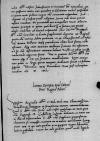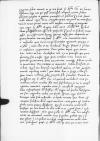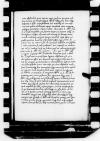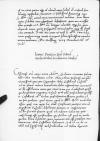Letter #4
Ioannes DANTISCUS to Bona SforzaHeilsberg (Lidzbark Warmiński), 1540-12-22
Manuscript sources:
| ||||||||||
Text & apparatus & commentary Plain text Text & commentary Text & apparatus
Serenissima Reginalis Maiestas et Domina, domina mea clementissima.
Humillimam orationum et servitiorum meorum commendationem.
Quod Serenissima Maiestas Vestra cf.  BJ 6557, f. 391v
pergerem, subito evanuit, eo quod non secus Serenissima Maiestas Vestra me hortari dignatur atque eum, qui post commissum aliquod contra fidem facinus ms. facimus(!)
⌈facinusfacinus ms. facimus(!)
⌉ receptus in gratiam promptior et fidelior, quam prius fuerit, reddi debeat.
BJ 6557, f. 391v
pergerem, subito evanuit, eo quod non secus Serenissima Maiestas Vestra me hortari dignatur atque eum, qui post commissum aliquod contra fidem facinus ms. facimus(!)
⌈facinusfacinus ms. facimus(!)
⌉ receptus in gratiam promptior et fidelior, quam prius fuerit, reddi debeat.
Quae de me concepta opinio non parum me contristavit, nihilo tamen secius mens recti conscia candorque et integritas mea erga serenissimas
Quid non hominum improborum malitia et tam versuta nocendi cupiditas audet? Quae toties licet a se ipsa victa sit, spem tamen victoriae odio occaecata sibi promittit. Proinde impensissime oro, Serenissima Maiestas Vestra, ut quomodo res habeat, certo pronuntiare valeat occultos illos meos insidiatores et me in campum apertum committat. Equidem etiam si cataphracti omnigenis dolis et sycophantiis
Hoc porro pacto Serenissima Maiestas Vestra hac molestia toties me cohortandi carebit, tunc siquidem quibuscum (si Diis placet) et quibus in rebus conspiraverim, nulli clam erit. Indulgeat, quaeso, Serenissima Maiestas Vestra iis meis ex re non vana
 BJ 6557, f. 392r
natis affectionibus, quas maxime auget, quod eos ex nomine mihi scire non datur, qui tam sint insignite improbi hostesque meae bene ubique conservatae et fidei, et existimationis, tam meticulosi, ut a me nosci vereantur, quibus nihilominus impune amarulento animo commenta confingere permittitur et forte creditur.
BJ 6557, f. 392r
natis affectionibus, quas maxime auget, quod eos ex nomine mihi scire non datur, qui tam sint insignite improbi hostesque meae bene ubique conservatae et fidei, et existimationis, tam meticulosi, ut a me nosci vereantur, quibus nihilominus impune amarulento animo commenta confingere permittitur et forte creditur.
Non ausim Serenissimam Maiestatem Vestram de promisso interpellare, quae superiori tempore et proxime, postquam ex
Ea, quae Serenissima Maiestas Vestra in negotio generosi domini
Neque putet Serenissima Maiestas Vestra, quod diligentior aut fidelior, quam fuerim hactenus, futurus sum umquam, etiam si in dies subinde eiusmodi commemorationes inculcentur. Quandoquidem conatus mei ulterius quam extensi sunt, extendi nequeunt, feci enim et facio semper, et certe meopte studio, ad quae iurisiurando devictum astrictumque me esse sentio. Ad haec item et vi quadam naturali naturaeque instinctu ac amore erga clementissimos  BJ 6557, f. 392v
est, iam toties pariter usque ad ultimum meum halitum ab eiusmodi fraudulentis impostoribus innocentiam et fidelissimum sincerumque erga Serenissimas
BJ 6557, f. 392v
est, iam toties pariter usque ad ultimum meum halitum ab eiusmodi fraudulentis impostoribus innocentiam et fidelissimum sincerumque erga Serenissimas
Hanc meam contra subdolos meos adversarios defensionem, quam non iniustus dolor extorsit, ut Serenissima Maiestas Vestra benigne admittat meque sua, quam aliquando merui, gratia prosequatur, intime supplico meque illi suppliciter commendo a Domino Deo orans, ut eandem Serenissimam Maiestatem Vestram in diuturna prosperrimaque mentis et corporis salute quam diutissime concedat vivere incolumem.



